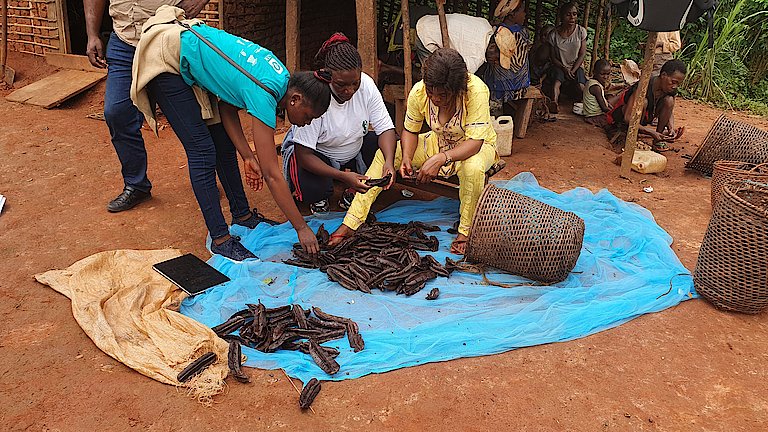Ginger (Zingiber officinale) is a plant native to Southeast Asia, introduced to Madagascar in the fifteenth century. The region's ginger, known for its zesty and lemony notes with a unique Madagascar aroma, is cultivated primarily between November and December, with harvests from July to October.
Usage of Ginger
Traditionally, ginger has been used for its culinary and medicinal properties. In Madagascar, it is prized for its unique flavor and aroma.
After being harvested by local farmers, ginger rhizomes are processed semi-industrially via hydrodistillation, yielding an oil with numerous health benefits, including digestive aid, anti-nausea, stimulating, and anti-inflammatory properties. The essential oil extracted from ginger rhizomes is used in the pharmaceutical, cosmetic, aromatherapy, and perfumery industries.
Supporting the ginger value chain
Despite its potential, ginger cultivation in the region faces several challenges. Farmers lack the financial means to produce high-quality materials, and yields are limited due to inadequate knowledge and planting techniques, along with low-quality seed varieties. Additional obstacles include land infertility post-harvest and diseases. These factors create obstacles for increasing the capacity and quality of ginger rhizome production.
These measures are used to overcome the challenges and develop a sustainable ginger sector for export:
- Assessing and improving ginger cultivation practices, based on UNCTAD’s BioTrade principles and criteria
- Developing farmers' production capacities by supporting productivity and harvest quality.
- Revitalizing local agricultural associations.
- Diversifying crops to enhance farmers' livelihoods.
- Protecting the environment through reforestation and nursery expansion.
- Supporting compliance with Access and Benefit Sharing (ABS) regulations.
- Restoring forest areas for sustainable use.


















